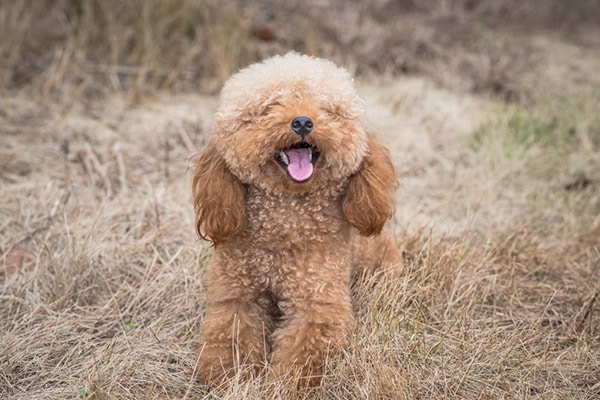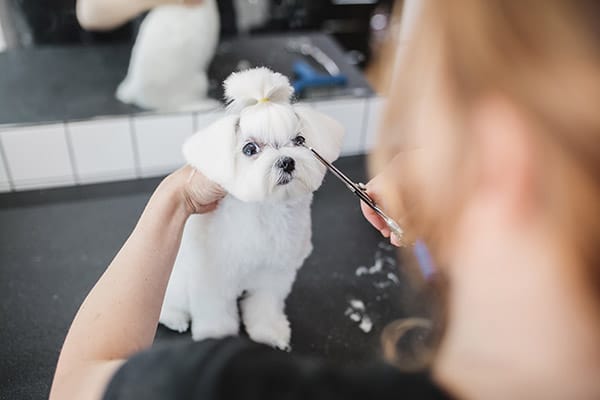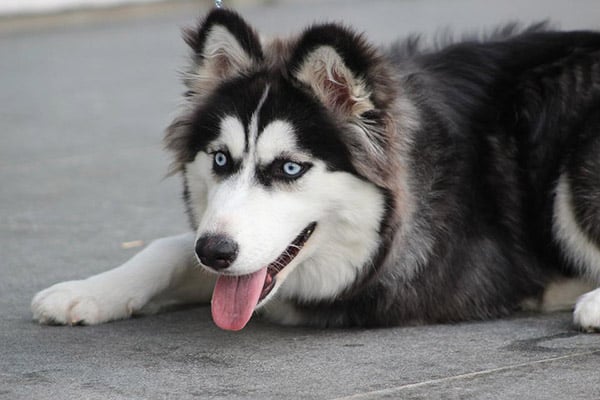If you have a dog that has a lot of hair and does a lot of shedding, then you might be considering using furminators for de-shedding.
This de-shedding tool is actually a bit controversial in the pet owning community.
Some people insist that it ruins a dogs coat, while others claim that it’s harmless.
Are you wondering if you should use a furminator?
We did the research and talked with dog owners in the local community to get their thoughts and experience on using furminators.
Here’s what we discovered.
How Does The Furminator Work?
The FURminator deShedding Tool is designed to remove the undercoat and loose hair without cutting or damaging the topcoat.
While shedding is a normal process that your dog goes through, and it’s not possible to stop it, the furminator is designed to dramatically reduce the amount of shedding that you’re dealing with in your home.
You should use in the direction of hair growth, typically starting at the base of the neck and brushing to the tail.
As you brush, it removes the undercoat and loose hair.
It is non-abrasive to the skin of your dog as it sort of vacuum and shears the loose hair and undercoat.
And here’s more on how this tool works directly from the furminator website:
It is important to use the deShedding Tool methodically over the entire pet, avoiding one area for an extended period of time. The FURminator deShedding Tool is fine to use on the ears and tail.
The ears and tail are typically sensitive areas for most pets, so extra caution will need to be taken when brushing these areas. Since the ears and tail typically mat easily, we advise to check for and remove mats and tangles before using the deShedding Tool.
With regular use, you should see a reduction in the amount of mats and tangles that form in the ears and tail because you are removing the undercoat that gets caught in the topcoat causing mats to form.
So, it’s kind of like those hair thinning shears for people’s hair, but not quite the same.
But that should give you a rough idea of how it works.
Will The Furminator Ruin Your Dog’s Coat?
Yes, it may damage your dog’s coat.
Some pet owners we talked to experienced this, while others did not.
Cassandra, who has a German Shepherd named Wolfie, says that she thinks part of her dog’s coat is damaged, but she’s not 100% certain on that.
His coat is gorgeous except for the part where his hind legs meet the body. On both sides the coat is shorter and looks cut. I don’t know if the furminator did this or if it’s just the way his fur is growing.
Laura, also the owner of a German Shepherd, has never noticed any damage to her dog from the furminator.
I use the furminator once every 2 weeks about and have not had any trouble so far.
Based on our talks with pet owners, overuse is a contributing factor to the damage.
If you use the furminator too often, then you run the risk of damaging your dog’s coat.
Dog owners agree that it’s a great tool when the dog is full grown has both its coats in.
But it it not a good idea to use it on a young dog or puppy, because it could break the coat.
You can also damage the dog’s coat if you use the furminator on a wet or damp coat.
Ditto for a brittle or dry coat.
Which Breeds Can’t You Use It On?

Not sure if you should use a furminator tool on your dog?
Well, keep in mind that this tool should not be used on non-shedding breeds or on pets with particularly sensitive skin.
Please consult a veterinarian if you are unsure if your pet has an undercoat.
Some of the breeds that you should NEVER use a furminator de-shedding tool on include:
- American Water Spaniel
- Bedlington Terrier
- Bichon Frise
- Bolognese
- Chinese Crested
- Coton de Tulear
- Curly-Coated Retriever
- Dandie Dinmont
- Glen of Imaal Terrier
- Havanese
- Irish Water Spaniel
- Kerry Blue Terrier
- Komondor
- Löwchen
- Maltese
- Poodle
- Portuguese Water Dog
- Puli
- Soft Coated Wheaten Terrier
This is not a complete list of breeds that you shouldn’t use a de-shedding tool on, but just some of the most common ones.

Final Thoughts
When used properly, and sparingly, a furminator is a great way to deal with the hassle of all that shedding that your pup does around the house, your car, and elsewhere.
It won’t ruin your dogs coat if you follow the instructions, use it on a shedding breed, and don’t use it frequently.
But when you use it too often, or on a breed that doesn’t shed, then it can damage your dog’s coat.



Furminator is great for use on long haired cats. My cat loves it and often jumps onto the bed and stares up at the headboard where I store it. The moment I reach for it he starts to purr with gusto and volume!
NOOOOO!!
I’m a groomer and a client couldn’t figure out why her Himalayan cat was “going bald” and she “brushed it all the time”…when I asked, you guessed it, she was using a Furminator!
I got one, just for kicks, and used it on my Doberman (super short, zero undercoat!). The hair, all hair(!), will come out with every stroke until you pet is bald!!
As a groomer, you should have known not to use it on a pet without an undercoat. I’m not a groomer and even I know that.
I was thinking exactly the same thing!
As a groomer, you should have known better. Coupled with the fact you continued to use it after seeing the first bald spot, well no one should use you as a groomer imho!
I thought the Furminator was great at first but in the end I felt that it was cutting my dogs fur. The hairs were shorter. I went back to a comb and finish with a slicker and honestly it’s so much better. My dog, husky mix, has a shiny wonderful coat. Never again. Threw mine away.
I am a pet groomer and you are correct, it will cut and shred those beautiful guard hairs and ruin the coat!
Just look at the length of your pets fur and then the length of the teeth in the FURminator tool, no IT IS NOT A BRUSH!!
Look on National Dog Groomer Association of America(NDGAA) for a groomer in your area for reputable advice for your pet’s grooming concerns.
I have tried the furmintor on my German Shepherd twice and both times it caused bald patches and abrasions to her skin. Never again!
This was recommended to us by a PetSmart employee. We’ve used this on the back of our 3 month old Rottweiler lightly twice and in that area his fur seems less soft and more coarse and has ripples in that area of his coat now. Will this damage eventually correct itself as long as we stop using this furminator and purchase a bristled brush?
Yes, stopping use of the product is a good idea if you are seeing damage. It normally takes a little time before the dog’s coat gets back to normal though.
i have a german shepherd and have use it for around a week and it makes my dogs hair softer and she shed less, i think it an alright tool as long as your careful!
I use it on german shepherd. Seems she sheds more. I do not recommend it. Won’t use it anymore. I have had it for awhile, don’t use it that often and it seems to make her shed more
I’m having that issue also – can I ask what brush you use ? The shedding is really excessive and I’m thinking this furminator is making it worse .
On our newfie, the furminator works amazing. We do it once every month or two, and then use a slicker the rest of the time. Her guard hairs are fine, nice and long, and her under coat is also intact, though subdued. We get about a brown paper grocery bag of fur if we wait 2 months. Her coat is always super soft and has a beautiful shine to it. If we don’t do it after two months, she tends to scratch more and the slicker has a harder time of brushing her natural oils through her fur. Ive used it on our Pomeranian too, but it wasn’t really necessary, a slicker works just fine.
I used it on my Dalmatian. Initially I thought it was great until I realised because it was pulling out all the under hair so thinning the dogs coat then when swimming in water I could see she was literally soaked to the skin. That never use to happen. My dog use to get terribly cold in water as a result, and that’s in summer. Also using one on my cat it takes out heaps of hair but the cat hates it as it keeps giving him electric shocks with static electricity.
Lisa,
The Groomer didn’t use it, she said one of her clients did.